List of Authors
>>About this blog
Recent blog post
|
[Sam]
October 30, 2014 09:00
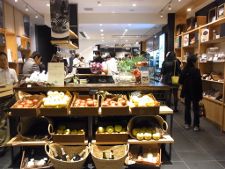 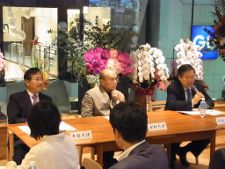
"Ginza NAGANO-Happiness Shinshu Share Space-" opened on October 26.
Every day, OPENING WEEK SPECIAL EVENT is also crowded, but this time, while listening to the talk show of Toyoo Tamamura, Katsuhiro Nakamura and Takeo Koizumi, the ambassador of "Delicious Shinshu Food (Fudo)" held on the 28th, "Delicious Shinshu Food" (Delicious Shinshu Food) Selected "Delicious Shinshu Food" that supports the food culture and lifestyle that brings the best healthy life expectancy in Japan.
In Nagano Prefecture, agricultural and livestock products raised in a climate surrounded by beautiful mountains and rich in seasonal changes are referred to as “premium” (compliance with carefully selected materials and carefully selected standards), “original” (original development brands and national market share) The reason is that it is carefully selected based on the three criteria of " Heritage" (traditional vegetables and local food), and is transmitted to and outside the prefecture with the unified brand "Delicious Shinshu Food (Fudo.
Starting with the surprise Shine Muscat and Chardonnay mariage, cinnamon is added to the ginkgo cut "Fuji" and stewed with cinnamon, "Oyaki apples" that can not be cleared up in a word with oysters ...
Experience a part of "Delicious Shinshu Food" rich in variety.
Writing
"Premium" ingredients
・Nagano Prefecture Origin Name Management System Certified Wine
Vinylons Reservedne/Mellow
(Viradest Garden Farm & Winery)
・Gouda cheese/Miso cheese (Nagato Ranch)
"Original" ingredients
・Smoke Shinshu Salmon (Tatsumi)
・Shinano Sweet / Shinano Gold / Shine Muscat (Nagano Prefectural University of Agriculture)
"Heritage" ingredients
・Oyaki <Nozawana / Apple> (Ogawa no Sho "Jomon Oyaki")
・Shimoguri Two Potato (Kamimura, Iida-shi)
・Soaking Togakushi radish miso (Shinshu tree flower shop)
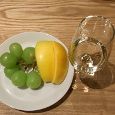 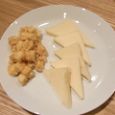 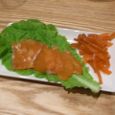 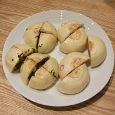
✎"Ginza NAGANO-Happiness Shinshu Share Space" is a place where Nagano Prefecture can share (share) the whole charm of Shinshu by transmitting Shinshu's things, people, and things in total, and create continuous and interactive connections. Established as a metropolitan area comprehensive activity base.
The first floor is a shop space and a taste corner inspired by old folk house in Shinshu, the second floor is an event space with an open kitchen and a tourist information corner, and the fourth floor is a co-working space (business matching, migration, weekend living, U/I turn support, etc.).
On the third floor, a Japanese restaurant with the theme of Shinshu ingredients is scheduled to open.
The Tokyo Tourist Information Center in Nagano Prefecture, located in the Transportation Hall in Yurakucho, has recently been closed and integrated.
[Sam]
October 20, 2014 09:00
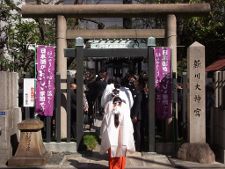 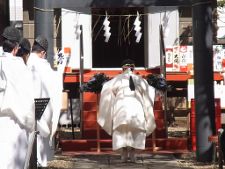
 On October 17, "Masaru Shinkawa Jingu Reisai Festival" was held by Miyaji Tomioka Hachimangu Shrine at Masaru Shinkawa Jingu Shrine in Shinkawa 1-chome. On October 17, "Masaru Shinkawa Jingu Reisai Festival" was held by Miyaji Tomioka Hachimangu Shrine at Masaru Shinkawa Jingu Shrine in Shinkawa 1-chome.
During the Edo period, when sake was transported by boat from the upper part, the accumulation area was Shinkawa, where water transportation was convenient, and flourished as a sake wholesale district and continued to this day.
Masaru Shinkawa Jingu Shrine has been revered as a guardian deity of Shinkawa's sake wholesaler since the Edo period, and when young sake arrived every year, it was dedicated to Jinzen as "Hatsuho" and then served for business.
Reisai Festival is still praying for the development of the alcoholic beverage industry, including local liquor wholesalers.
After the festival, we moved to the adjacent Sake Foods Health Insurance Association Hall and held a direct meeting (Narai), which has been handed down since the Edo period, "Celebrating the conclusion of business negotiations and praying for the prosperity of both sellers and buyers." "A unique hand tightening "Shinkawa tightening" will be unfolded.
Participants heard that there is a penalty called "punishable cup" if the drink is poorly drunk one after another in accordance with the shout and clapping of "Prosperity-".
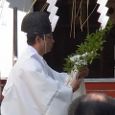 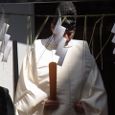 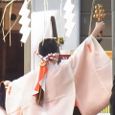 
✎Shinkawa tightening procedure
1. "Oh!"
(In the first vocalization, the signal that the sake has finished pouring into the cup. It also means confirming the establishment of a business.
2. "Borrow your hand" (a signal to ask everyone to clapping)
3. "I'm sorry!" (A signal to finally start tightening)
⑦ Yoi Yoi Yoi Yoi Yoi Yoi Yoi Yoi Yoi (Kora) Yoi Yoi Yoi
⑤ Chon gohan
③ Jou
The underlined part of the katakana vocalization + clapping. The underlined hiragana is only clapping. (Katakana) part only speaks.
It is also known as "7.5.3 tightening" because it is hand-made with a rhythm of 7.5.3.
[Sam]
October 13, 2014 14:00
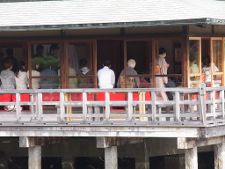 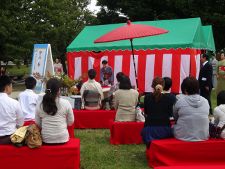
Tea ceremony (Ochiyaya of Nakajima) Nodot (Nakano Bridge)
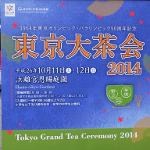 On October 11th and 12th, "Tokyo Daichakai 2014" was held at Hamarikyu Onshi Garden. On October 11th and 12th, "Tokyo Daichakai 2014" was held at Hamarikyu Onshi Garden.
This event started in 2008 to make people who are not familiar with the tea ceremony feel free to enjoy the tea culture and tea ceremony.
One of the main programs of "Traditional WA Impressive from Tokyo", which conveys the appeal of traditional Japanese culture both domestically and internationally, is to introduce the culture of tea and the culture of Edo and Tokyo that has nurtured it.
This year marks the 50th anniversary of the 1964 Tokyo Olympic and Paralympic Games. In addition to three programs in the park, “Tea ceremony” (Ochiyaya in Nakajima), “Nodot” (Nakano Bridge), “Tea ceremony first experience” (Hanagien)”, a performance of Edo peddler, Edo Dai-Kagura, a stage event with a sumo jinku, Nihon Buyo and shakuhachi, a shakuhachi, a shakuhachi, and a shakuhachi, a shakuhachi, a stage event.
In the "Nodot" corner, in addition to the "Nodot" (3 seats in total) by the tea ceremony federations in Itabashi-ku, Kita-ku, and Chuo-ku, the "English Nodot" by the Meguro-ku Tea Ceremony Federation, and the Tokyo High School Cultural Federation Tea Ceremony Division "High school student field point" is organized.
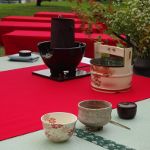 At the Nodot of the Chuo-ku Tea Ceremony Federation, listen to explanations of the differences between manners and others depending on the school, and listen to the story about the tea utensils on display after receiving them. At the Nodot of the Chuo-ku Tea Ceremony Federation, listen to explanations of the differences between manners and others depending on the school, and listen to the story about the tea utensils on display after receiving them.
On the day, Omotesenke, Urasenke, and Yuuraku were taking turns.
The tea ceremony is a comprehensive art that pursues the ultimate beauty of scenery, tools, manners, etc., and is said to have a spirit of "motivation" at the root of a unique philosophy.
Under the autumn sky, it was a time to get a glimpse into a part of the deep tea ceremony world.
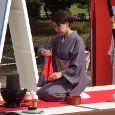 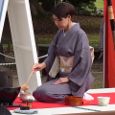 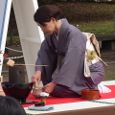 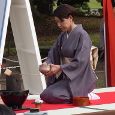
[Sam]
October 11, 2014 09:00
 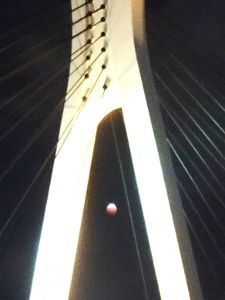 On the night of October 8, there was a "total lunar eclipse" where the moon glowed dullly in red and bronze. On the night of October 8, there was a "total lunar eclipse" where the moon glowed dullly in red and bronze.
A total lunar eclipse is a phenomenon in which the earth enters between the sun and the moon, and the shadow of the earth falls on the moon.
It is the first time that a total lunar eclipse has been observed in Japan for the first time in three years since December 2011.
It began to chip around 18:15, and it became a total eclipse from around 19:25 to around 20:25.
It is said that red light, which has a long wavelength of sunlight, is refracted and scattered in the Earth's atmosphere and slightly illuminates the moon, so it does not become dark and looks dull red bronze.
Astronomical show that takes about 3 hours and 20 minutes in total, including partial meals.
The next total lunar eclipse will be seen in Japan on April 4, next year.
The upper left photo shows the "partial meal" in progress at around 18:45, as seen from the main tower of Chuo-ohashi Bridge.
    
[Sam]
18:00 on October 7, 2014
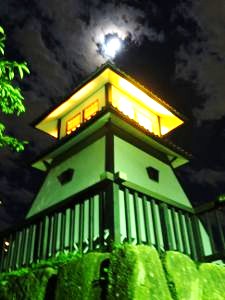  This year, October 6 is September 13, old calendar, and "Thirteen Nights". This year, October 6 is September 13, old calendar, and "Thirteen Nights".
The 15th Night of old calendar on August 15 is called "Imontsuki" because of the custom of offering taro during the harvest season, but it is also called "Kurinametsuki" or "Mamenametsuki" or "later month".
The lack of moon viewing on one side of the fifteenth and thirteenth nights is called "Kata Mizuki", and it is said that there is a bouncing wind.
It is considered a custom unique to Japan and is thought to have been one of the autumn Harvest festivals.
In general, the night of the thirteenth night is often sunny, and I hear the word "no cloudy on the thirteenth night".
This year, Typhoon No. 18 passed in the morning and the blue sky spread in the afternoon, but at night, spotted clouds.
The "moon floating in the waves of clouds" shining on the "top" of Ishikawajima Lighthouse at lit up Tsukuda Park also has a taste.
[Sam]
09:00 on October 4, 2014
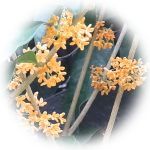  In October, the plating becomes cooler in the morning and evening, the leaves of the grass gradually begin to change color, and you can feel the sign of autumn in the breeze blowing. In October, the plating becomes cooler in the morning and evening, the leaves of the grass gradually begin to change color, and you can feel the sign of autumn in the breeze blowing.
Harumi Triton Square's "Green Terrace" and "Flower Terrace" will soon reach the colorful "fall colors" season.
There is a fragrance of "Kinmokusei" in the park. (upper right photo)
This time, the theme of the monthly “Mini Garden Guide Tour” held on October 2 <real thing (Mimono) and spring flower buds> I will introduce the real thing that is changing color and the flower buds next spring are growing little by little while waiting for the time to come.
By the way, "plants walk" is said to be "town walk" based on "green" that loves plants while strolling around the park and the city (town).
Discover the unexpected charm of the city area and add color to your daily life.
It is often thought to be a white version of Japan globeflower (5-petaled flowers, leaves alternate), but the fact of Shiroyamabuki (4-petaled flowers, leaves are opposite) belonging to the family Rosaceae is glossy black.
The cypress family Conodegashiwa fruit, which is said to have been named after the twigs are well branched and lined up like a child's palm, is a unique shape with a projection.
dogwood, Hachijoukibushi, Tamushiba, Japanese allspice ... Preparation of flower buds for next spring is progressing steadily.
    
Cishiyuzu Kinkan Hymeringo Squirrel Sanshuyu
    
China Japanese dogwood Soyogo Conotegashiwa Squirrel White butterfly
    
Holly mochi dogwood Beetle (flower buds) Tamushiba (flower buds) Japanese allspice (flower buds)
1
|
Links
|























 This year, October 6 is September 13, old calendar, and "Thirteen Nights".
This year, October 6 is September 13, old calendar, and "Thirteen Nights".
















